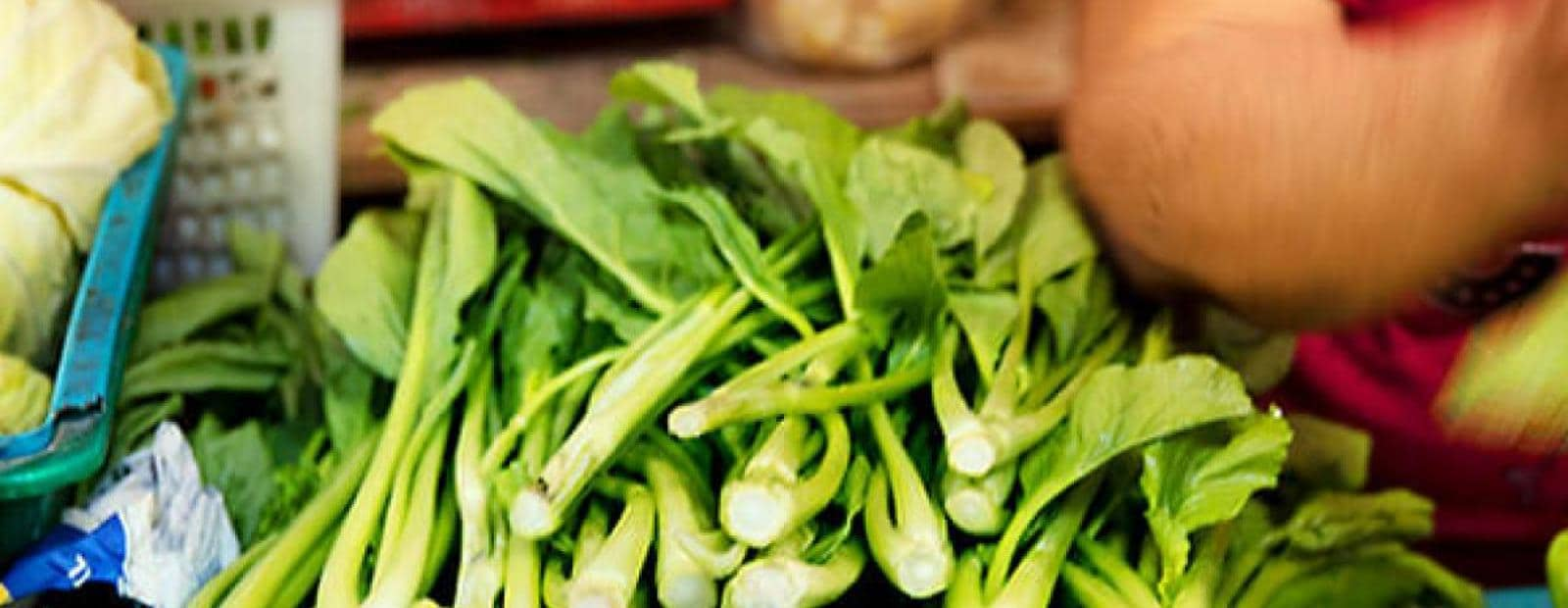Stopping Crop Losses
It’s astonishing: One-third of all food produced in the world is lost or wasted before people consume it, according to estimates calculated by the Food and Agriculture Organization of the United Nations (FAO). This equals a loss of 750 billion US dollars annually. Overall, crop losses threaten the entire food production chain – and Bayer is committed to its prevention. Here are some places to start.
Sowing
The Challenge
Climate and weather
Farmers are battling extreme weather in regions around the world. Vietnam, for example, experienced historic drought levels in 2016, which led to record levels of salinity in the fields. These conditions mean crops face poor growth, which often leads to unhealthy crops. This results in crop losses at early stages of development.
A Solution
Suitable seeds
Growers need strong seeds that deliver early vigor and high yield potential. For example, hybrid rice seed varieties perform well to withstand diseases, insect pests and increased levels of water salinity. By using hybrid seeds, Vietnamese rice farmers have already increased yield potential significantly.
Globally, 1.3 billion tonnes of food—one-third of all food produced for human consumption—is lost or wasted each year.
Pre-Harvesting
The Challenge
Crop diseases
Crops compete against 30,000 different weeds. They also battle more than 10,000 species of hungry insects and 3,000 types of nematodes as well as a broad array of diseases caused by fungi, bacteria and viruses. All of these enemies threaten quality and volume of farmers’ yields.
A solution
Digital farming tools
Along with chemical and biological crop protection control tools, farmers can still harvest the maximum of their crops by using digital tools: Digital farming technology, such as GPS and sensors, empowers farmers to make a diagnosis of a specific plant disease, as one example, right away and right on the field – preventing crop loss from the start.
Storage
The Challenge
Inadequate storage
Poor storage facilities cause post-harvest crop losses, especially in developing countries. When storage conditions are inadequate, a variety of pests can easily infest stored crops.
A Solution
Lower temperatures
Cooling down the temperature inside the silo helps to reduce the rate of pest reproduction. At the same time, empty granary bins and silos can be treated between batches to prevent infestations. And when the grain enters the silo, it can be protected with a suitable insecticide for additional protection.
In developing countries, 40 percent of losses occur at post-harvest and processing levels, while in industrialized countries more than 40 percent of losses happen at retail and consumer levels.
Processing
The Challenge
Inadequate processing techniques
Crop losses may occur when farm employees sort crops. Accidents and interruptions during washing, peeling, slicing and boiling also lead to losses.
A Solution
Employee training
Regular workshops for farm employees demonstrate the dos and don’ts of processing crops. According to the FAO, these pieces of training should include demonstrations of the causes and effects of damage to produce, emphasizing the need for careful handling at all times to avoid mechanical injuries.
Logistics/Transportation
The Challenge
Non-refrigerated transport
Mechanical damage and overheating cause non-refrigerated transport situations, resulting in crop loss.
A Solution
Proper products preparation
To prevent crop loss during its transportation, export and import requirements for the safe transport of fresh food must be understood and followed strictly. The key is preparing the product properly so that it can withstand long transport times.
Almost half of the fruits, vegetables, roots and tubers produced are wasted. These crops have the highest waste rates of any food.
Sale
The Challenge
Over-cautious retailers
Among retailers, it’s common practice to throw away food rather than sell it close to its expiration date.
A Solution
Discounts
Experts recommend retailers try offering items that are near expiration at a discount. This strategy doesn’t reduce sales; in fact, it raises customer satisfaction.
Household Consumption
The Challenge
Food waste
Consumers may buy more groceries than they can eat – and then throw away the food because they can’t eat it in time.
A Solution
Freeze perishable food
The FAO recommends: If you only eat a small amount of bread, then freeze it when you get home. You can take out slices a few hours before you need them—and the bread stays safe to eat.









